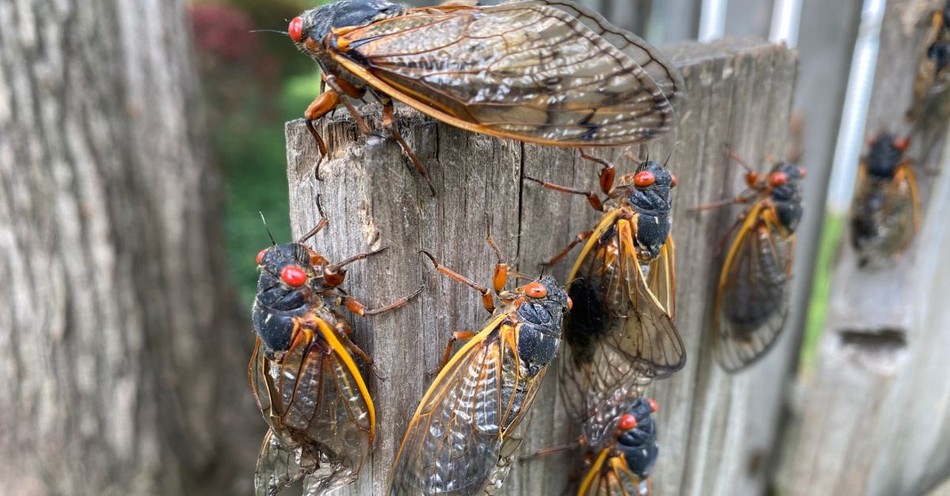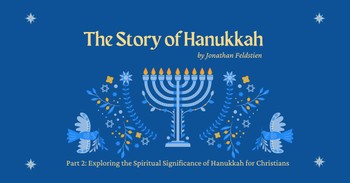Every few years (or in turbulent years, every few months), an unusual natural disaster will lead to people asking if the end times are coming. When a rare natural event occurs, like cicadas appearing as if out of nowhere, some Christians really get worried. Could the appearance of cicadas be a sign of the end times? Do cicadas appearing every decade or so have some biblical significance?
Let’s take a deeper look at what the Bible says about the end times, and whether it has anything to say about cicadas.
Are Cicadas a Sign of the End Times in Revelation?
The book of Revelation discusses a variety of signs that the end times have arrived, including something that looks like a swarm of locusts (Revelation 9). However, swarms of cicadas are not mentioned anywhere in Revelation.
Even when Revelation talks about swarms of locusts, it does not describe them as an isolated event. The locusts are part of a larger story beginning a few chapters earlier. In Revelation 4, the author (John) describes a vision of entering God’s throne room in Heaven. John then sees a lamb open a scroll with seven seals, each seal leading to cataclysmic events. There are earthquakes and the sky turning blood red (Revelation 6). Vegetation dies and a falling star turns water bitter (Revelation 8). It is not until these and other surprises happen that locusts appear, coming from a bottomless pit and receiving instructions to torment people who “do not have the seal of God on their heads” (Revelation 9).
There are many interpretations of what the locusts in Revelation 9 may represent. Given that they are described as wearing crowns and looking “like horses prepared for battle… and their faces were like the faces of men” (Revelation 9:9), they are probably fantastic creatures meant to symbolize some other threat. Different scholars have offered different views, often heavily influenced by their time period. For example, the eighteenth-century theologian John Gill, writing when many English Protestants were concerned about Roman Catholics and Muslims influencing Western culture, interprets the locusts as being rogue priests and “Saracens” (an older word for Muslims or, more generally, Middle Eastern people).
Even theologians who interpret the locust swarm literally will highlight how the swarm only appears at a particular time (when the Lamb opens the second seal). Theologians who believe Revelation offers a detailed timeline of what will happen before Jesus’s second coming usually maintain that other events will happen before any natural disasters involving locusts or other animals, such as:
- The appearance of a global ruler who claims godlike status (the Antichrist)
- A period of persecution against Christians
- A rapture in which Christians will be taken up to heaven (possibly before the tribulation, maybe after).
In short, there is no reason to believe cicadas swarming is connected to the end times. Even if insect swarms are a sign of the end times, their appearance would mean that the last days are well underway, not beginning. By the point locusts show up, other events should have tipped us off that things are going downhill.
While Revelation may not talk about cicadas, a related question remains: does the Bible tell us anything about them?
Does the Bible Talk about Cicadas?
Some writers who argue that cicadas appearing is a sign of the end times attempt to connect them with locusts. For example, people may claim that the Hebrew word for cicadas is connected to the word for locusts.
While pop culture articles (like Seth Rogovoy’s article in Forward) will use cicada swarming periods as a jumping-off point to talk about locusts in the Bible, these are fun news pieces, not serious attempts to connect cicadas to locusts or the Bible.
In fact, the Bible never mentions cicadas at all. There are some species of cicadas in the regions where biblical events occurred (the Middle East, Africa), so cicadas presumably existed in biblical times. But the Bible never mentions them.
There are biblical passages describing animals that could be one of several different species of animals. For example, some Bible translations list the Leviathan mentioned in Job 41 as possibly an alligator. However, there are no passages in the Bible that mention locusts, and the text suggests it could be talking about cicadas instead. As a helpful article by Purdue University’s Department of Entomology explains, cicadas do not have much in common with locusts. They come from different insect families and have different eating habits (cicadas generally eat tree sap, while locusts eat farm crops).
The difference between what cicadas and locusts eat is crucial because it explains why locusts are mentioned so prominently in the Bible. Most societies mentioned in the Bible used agriculture as a major part of their economies, so insects that ate farm crops could cause huge devastation. Locusts swarming spelled disaster, so when ancient people read Revelation 8, they knew the book used locust imagery to symbolize the worst kind of disaster coming. Cicadas swarming would not have any of those connotations.
This discussion still leaves one last concern that people raise about cicadas: does the fact they breed every 13 or 17 years have some apocalyptic significance?
Does the Cicada Breeding Period Fit Biblical Numerology?
At least in North America, cicadas appear either every 13 years or every 17 years. Some writers who attempt to connect cicadas to the end times argue that this number is significant because biblical numerology uses 13 and 17 to represent destruction.
While the Bible does use certain numbers in prominent ways to symbolize something, 13 and 17 do not have any special significance in the Bible. Numbers like three (divine, especially when talking about the trinity), six (imperfection), and seven (divine perfection or holiness) have special significance.
Thirteen developed a reputation for representing ill fortune sometime in the eighteenth century, but is not a cursed number in the Bible. Modern discussions about 13 often associate it with the 13 guests at the Last Supper (Jesus and the 12 disciples), but there is no evidence that the Bible uses 13 to represent bad luck. Given that Jesus and his disciples had been traveling together for three years before Good Friday, if 13 was somehow unlucky, they would have noticed it long before that night in Jerusalem.
Seventeen is sometimes an important number in modern societies (for example, some age between 15 and 17 may be seen as the age when a juvenile girl is considered a young woman), but ancient societies did not treat it as an especially important number.
In short, any sense that cicadas swarming every 13 to 17 years is important comes from us perceiving it as a rare event, not from it having a special biblical meaning. Nor is there any clear evidence that cicadas have a special significance in the Bible, either in apocalyptic texts about the end times or elsewhere.
However, that does not mean this discussion about cicadas and the end times does not have important lessons for us today.
What Can the Cicadas and End Times Signs Discussion Teach Us Today?
While cicadas have nothing to do with the end times, considering why people are prone to read end times ideas into cicadas swarming reminds us of some crucial things to remember.
First, any time something occurs in nature that seems strange, we should be cautious before assuming it has a special biblical meaning. God may use nature to communicate things to us, but treating every natural event we find strange as a sign is not a sign that we are spiritually minded. Essentially, it’s pagan thinking: treating all of nature as filled with odd threats we need to interpret quickly so we can appease whatever we believe caused the dangerous event.
Second, any time people bring up end times topics, we need to do our homework. We go back to the Bible to see if the supposed claim is something Revelation or other apocalyptic books mention. We consider whether the text is using a concept (locusts swarming, armies rising, etc.) as a symbol for something else. For example, if there is fantastic imagery involved, like giant crown-wearing locusts, there is something more than a literal description occurring.
Third, we reach out to a community of experienced Christians who can help us discern the Bible’s teachings better. We only know as much as we have studied ourselves. Within the body of Christ, we find believers who have studied books of the Bible we haven’t gotten to yet, who have lived longer than we have, and can tell us if certain fears are just fads (like the fact that cicadas come every 13 or 17 years). The church can be a complicated community, filled with people figuring out the Bible. At its best, though, Christian community strengthens us where we are weak and protects us from the swarms of conspiracy theories and unhealthy trends that seek our attention.
Further Reading:
How Does God Reveal Himself to Us Through Nature?
Do Locusts Have a Supernatural Meaning in the Bible?
5 Things to Ask When You Think Something Is a Sign of the End Times
Photo credit: ©Getty Images/Jeff Herge





.jpg)